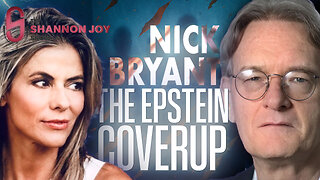Premium Only Content

Veil of Anonymity: Rosicrucian Secrets to Digital Shadows
In the flickering torchlight of the Middle Ages, anonymity was not merely a choice but a shield. Secret societies — those clandestine cabals of knights, mystics, and scholars — wove secrecy into their very fabric, protecting their members from the prying eyes of monarchs and inquisitors.
The Knights Templar, founded in 1119, shrouded their wealth and rituals in mystery, their red-crossed banners a silent promise of power and piety. Their anonymity, however, could not save them from King Philip IV’s wrath in 1307, when accusations of heresy led to their fiery demise—a stark reminder that secrecy can both empower and imperil.
By the 17th century, the Rosicrucians emerged as a luminous thread in this tapestry of shadows. Their enigmatic manifestoes—the Fama Fraternitatis (1614) and Confessio Fraternitatis (1615)—appeared unsigned, heralding a brotherhood devoted to esoteric wisdom and scientific inquiry.
Believed to be founded by the mythical Christian Rosenkreuz, their anonymity was a bulwark against the religious fervor of the Counter-Reformation, allowing ideas to flourish where their bearers might have burned. Influencing luminaries like Isaac Newton, the Rosicrucians proved that anonymity could nurture intellectual rebellion, planting seeds for the Enlightenment.
These early traditions reveal a timeless truth: anonymity is a double-edged sword, offering sanctuary to the persecuted while cloaking the ambitions of the powerful. From medieval cloisters to Renaissance pamphlets, it has been a tool for survival and subversion, a legacy that echoes into our modern age.
Read more at article below… https://substack.com/@liquidlogic/note/p-159501010?r=2w5sup&utm_medium=ios&utm_source=notes-share-action
Unwitting Assets is produced as educational content for the public, to give US citizens a foundational course in the field of Intelligence, National Security, and Cognitive Warfare.
-
 1:04:57
1:04:57
The Rubin Report
1 hour agoCrowd Stunned by Trump’s Brutally Honest Remark at Charlie Kirk’s Funeral
24.4K14 -
 UPCOMING
UPCOMING
Grant Stinchfield
46 minutes agoThe Exploitation of Charlie Kirk's Death is Very Real
1 -
 1:40:13
1:40:13
Nikko Ortiz
1 hour agoJapan's Prison Of DISHONOR - Rumble Studio LIVE
7.84K3 -
 LIVE
LIVE
The Mel K Show
1 hour agoMORNINGS WITH MEL K Globalist Descend on America: Is it Time to Pull the Plug? 9-22-25
446 watching -
 UPCOMING
UPCOMING
The Shannon Joy Show
50 minutes agoEpstein Cover Up - Kash Patel Has Names Of Epstein’s Pedophiles. Live Exclusive With Nick Bryant!
10 -
 LIVE
LIVE
LFA TV
15 hours agoLFA TV ALL DAY STREAM ! | MONDAY 9/22/25
4,933 watching -
 9:08
9:08
Hollywood Exposed
20 hours agoMatthew McConaughey Shocks ABC Host With Blunt Message to Democrats
442 -
 1:01:18
1:01:18
VINCE
3 hours agoAre We Witnessing A Revival? | Episode 130 - 09/22/25
198K128 -
 LIVE
LIVE
Caleb Hammer
18 hours ago$426,000+ A Year On Pokémon | Financial Audit
90 watching -
 LIVE
LIVE
The Big Mig™
2 hours agoTruth Bombs w/ Tom Renz
6,354 watching